
Interviews
/
12/24/2024
The challenges of stone never previously restored
We spoke with Paolo Pecorelli, Technical Director of the international team working on the Hegra Conservation project
The Hegra Conservation Project exploits multidisciplinary teamwork to restore degraded stone in a desert climate. Combining academic, research, and industry expertise, the team analysed stone materials and used advanced restoration methods. The mission will pave the way for future conservation interventions. We interviewed Paolo Pecorelli, Technical Director of the International team working on the Hegra project.
The Hegra Conservation Project is a perfect example of teamwork. What is its background?
Creating a complete and multidisciplinary team proved to be the winning hand in Estia being adjudicated the international tender for the Hegra project. Thanks to many years of experience in the restoration field we managed to bring together a team of professionals coming from Universities, the Italian Research Council and the private sector, as well as from companies of excellence such as Mapei: all of them highly specialised with outstanding CVs. By combining these operators from the scientific and business worlds we were able to create a team that was highly appreciated by the project owner, first and foremost by the members of the Royal Commission for AlUla. The context of the site is extremely challenging: a very hot climate in the summer with high temperature variations which contributes to such severe degradation of the materials. This led to the need to promote a scientific study into stone materials that had never been studied previously. And this is why we initiated the collaboration with Mapei, a company with extensive knowledge and experience of different types of materials and accustomed to carrying out research and providing solutions to problems that designers and building companies encounter.

The Hegra Conservation Project team is aimed at analysing the state of conservation of the monuments and tombs. © Royal Commission for AlUla.
What is the current status of the restoration work and when is it expected to be completed?
We are looking to complete the work in December 2025. Our study will have to be progressed in an articulated manner and covers a lot of monuments with different types of problems. In parallel with the research work and the analytic study of degradation on the samples analysed in Italy, activities are also ongoing to look more deeply into securing the rock and to carry out a mineralogical and geological study. During the summer months, when it was not possible to work on site, we processed the data and continued with our research work on various fronts.
How useful has the laboratory analysis been in defining which products and technologies would be the most suitable for restoration work on this site?
The results of the analysis serve basically as a guide to find solutions and to develop bespoke materials for the specific needs that we will have to deal with. From the investigations carried out until now, we can conclude that, within the site, there are rock masses in which tombs have been excavated, with different petrographic characteristics. We are currently starting a new mission in the field, during which we plan on carrying out numerous samples of restoration work with the aim of defining operational methods that will mainly cover the consolidation of loose rock, fixing portions of stone at risk of becoming detached and testing grouts with grain sizes and colours similar to the original stone. Our research work focuses on obtaining the maximum affinity and compatibility with the original materials.

Hegra Conservation Project aims to assess the conservation status of the Hegra tombs and monuments through close observation, collection of material samples and diagnostic analysis. © Daniel-Donati-Hegra-Conservation-Project.
How important has it been to be able to rely on a partner like Mapei?
Mapei provides support in every phase of the project, right up to the development of the products we will then go on to use. Up until now Mapei has been a constant, active partner and will continue to be so for the entire duration of the project. Especially in the case of a context like Hegra which, from a scientific perspective, has hardly been studied, the assistance of a partner like Mapei, including while work progresses by using its equipment to carry out checks and controls, will always be necessary. This cooperation will not come to an end soon but will continue over time and will be extremely important, not only in bringing the Estia project to an end, but also for the Royal Commission for AlUla itself which, in the future, will have protocols on hand about procedures and products developed and tested on site.









